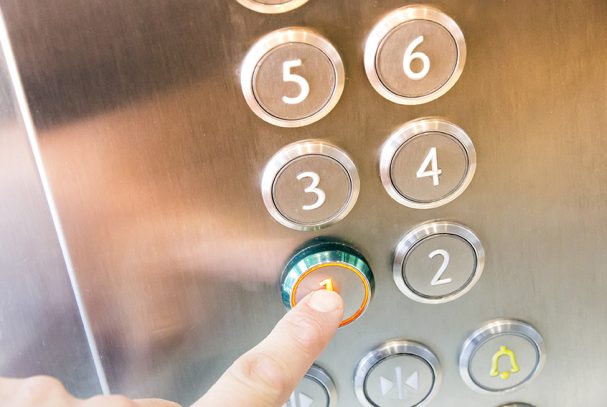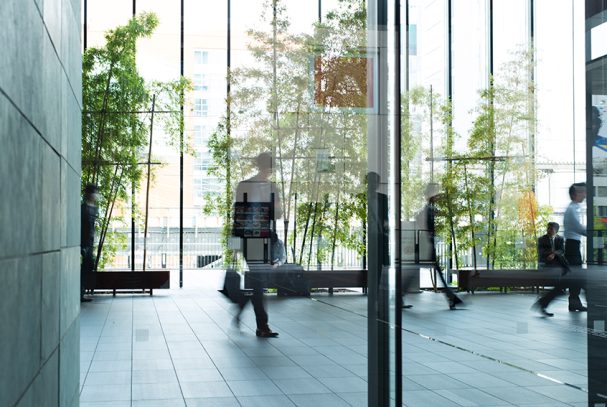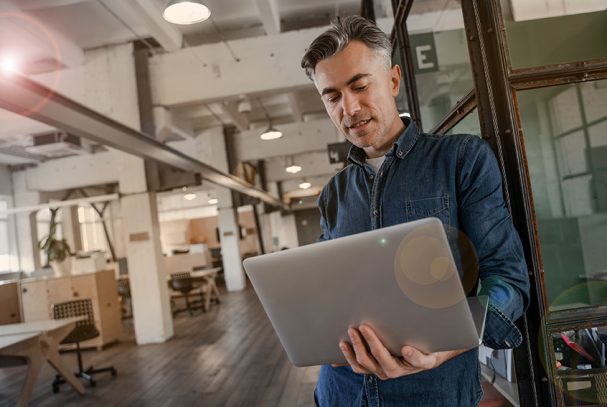Newsec’s Property Manager Jarno Aalto has his hands full as he manages a network of service providers for the maintenance of a large service property in Helsinki.
The organization of this work is facilitated by the Digital Twin found in the Granlund Manager software. It is a virtual copy of the building that helps in managing property-related data and visualizes maintenance processes.
“I use the Digital Twin primarily to monitor the conditions in the premises,” Aalto says.
The Digital Twin presents the property maintenance data in an easily comprehensible form. A 3D floor plan of the building allows you to monitor indoor temperatures on a floor-by-floor and room-by-room basis in real time on a laptop or smartphone, for instance.
I use the Digital Twin primarily to monitor the conditions in the premises.
Newsec’s Property Manager Jarno Aalto
Colour-coding helps you quickly grasp the situation and spot any issues that require your intervention.
“In areas marked in green, the conditions are OK, while the yellow colour indicates a divergence observed in the conditions, and areas marked in red deviate significantly from the target state.”
Faults are detected and corrected quickly
Deviations trigger a service request to a service technician, who can access the Digital Twin from their device. This will allow them to get an accurate picture of where and what the problem is.
“The fault can be corrected quickly, which improves the comfort of the premises. Energy consumption and thus emissions can also be reduced as unnecessary heating and cooling in the premises are minimized,” Aalto explains.
The energy efficiency of the service property is also improved by the remote monitoring of building services by Granlund. Thanks to energy data analysis, equipment malfunctions and deviations are quickly detected as service requests are forwarded through Granlund Manager to a maintenance company.
Data compiled from information models and automation systems during the design phase is extremely useful in property management and maintenance.
Satisfied users
Granlund’s Business Development and Innovation Manager Mika Virkki says that like Aalto, many other customers who use the Digital Twin have given positive feedback.
Data compiled from information models and automation systems during the design phase is extremely useful in property management and maintenance.
“In addition to condition monitoring, the Digital Twin can be used, for example, to check the exact locations of the air conditioning, heating and cooling ducts. This is very useful, for example, when making alterations in the premises,” Virkki says.
The Digital Twin can also be combined with Granlund’s Equipment Data Management software, which provides accurate and up-to-date information on building services equipment.
The Digital Twin can also be combined with Granlund’s Equipment Data Management software, which provides accurate and up-to-date information on building services equipment.
Smooth cooperation with Granlund
According to Aalto, the use of Digital Twin in the property will expand in the near future, with the users of the property given the opportunity to give feedback on the shortcomings they have detected. This is done easily and quickly with QR codes.
“If, for example, a light bulb is burned out in a room, the property users can scan the QR code with their smartphone and notify the service team. The information is forwarded to a maintenance technician who will then replace the light bulb,” Aalto explains.
He expects in the coming years that more features will be added to the Digital Twin to facilitate property management and maintenance.
“The system keeps improving all the time. We are discussing additional functionalities with Granlund experts, and so far they have been successful in fulfilling most of our wishes. On the other hand, they also tell us right away if something is not feasible, for example for cost reasons.”
What is a Digital Twin?
A Digital Twin is a virtual duplicate of a building that helps to manage property-related data and illustrate maintenance processes. The Digital Twin compiles data from the BIMs used during the design phase, from IoT and automation systems and from property users, among other sources.
Read more:




